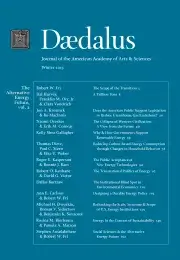Designing a Durable Energy Policy
Although the U.S. energy system seems to resist the changes necessary to meet today’s challenges related to energy security and climate change, the system has gone through massive change several times since 1850. A major driver in each of these earlier transitions was an economic value, such as mobility, that markets could capture. Because environmental and security values are public goods, changing today’s energy system will require a policy that creates a market signal reflecting these values. However, it is also necessary to craft a policy framework that is both durable over a long time period and able to adapt to new information as it becomes available. This essay examines some of the possible attributes of a durable and adaptable policy. The discussion is necessarily preliminary because relatively little formal research exists on this topic. However, even a preliminary examination suggests that considerations of policy durability could affect the choice between a carbon tax and a cap-and-trade system.
Since the early 1970s, U.S. policy has sought to create an energy system–both for transportation and for electricity–that is cleaner and more secure than the one we have without significantly raising energy prices. We have made some progress, especially in reducing by about half the energy intensity of the economy (that is, the amount of energy needed to produce a unit of GDP) and in reducing emissions of conventional pollutants.1 Even so, the National Research Council recently estimated that available technology could reduce energy consumption by a third.2 Moreover, despite the emergence of electric vehicles and biofuels, our transportation system still depends on petroleum for over 95 percent of its fuel. This dependence exposes our economy to variations in world oil prices over which we have little control. More than 83 percent of our overall energy system still uses fossil fuel; this is better than the 93 percent dependence on fossil fuel in 1973, although the emergence of nuclear power accounts for most of the improvement.3 Fossil fuels not only create greenhouse gas emissions, but also impose significant health costs on the economy through the emission of conventional pollutants, despite considerable improvements resulting from the federal Clean Air Act.4
We have a long way to go until we have the energy system that we say we want. Fundamentally changing the energy system is no simple task because this system is more than a collection of easily replaced hardware. Rather, it is deeply embedded in both the physical and social infrastructure of the nation.5 The petroleum, transportation, and electric systems are not only technological but also social; their operation requires behaviors on which modern life has become utterly dependent. One might also suggest that the energy system is deeply embedded in the nation’s political infrastructure.
. . .
